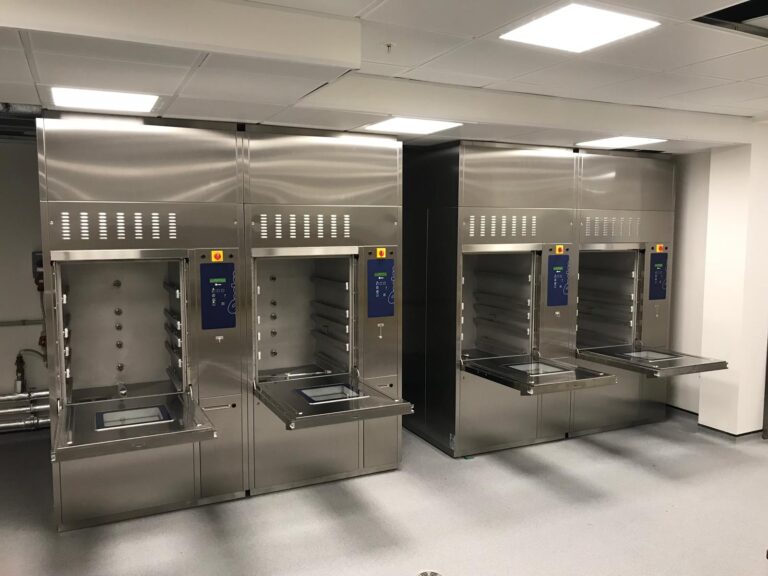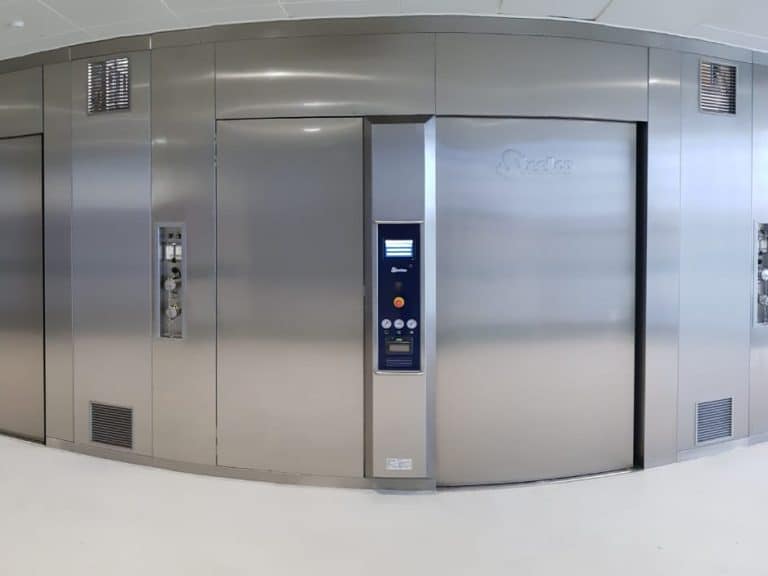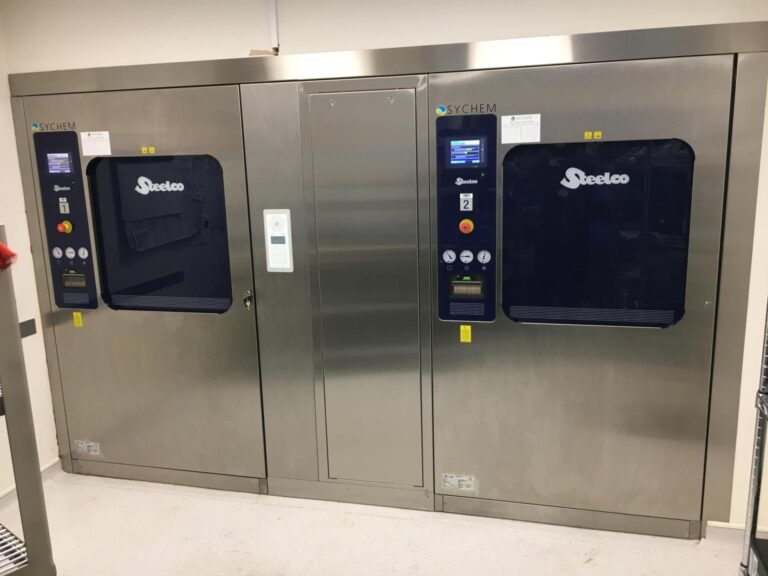Sychem are experts in Disinfection, Sterilisation and Decontamination, and are specialists in Capital Equipment. We supply an extensive portfolio of Steelco Autoclaves for use in various industries, but just how do you use an Autoclave?
What is an Autoclave?
To begin with, an Autoclave is arguably the most effective sterilisation method for glassware and laboratory equipment. Autoclaves are vessels that use clean steam under high pressure to sterilise equipment. Sometimes referred to as porous load sterilisers, Autoclaves are commonly used to sterilise reusable medical devices & Laboratory equipment after decontamination. The machines come in various sizes and configurations, ready to meet the customer and facility’s needs. Read more about vertical loading autoclaves.

How do you use an Autoclave?
To use an Autoclave, the user must follow a number of simple steps. First of all, an empty chamber cycle should be undertaken to warm up the chamber and remove any condensate from the pipes. In turn, this cycle run will also ensure that the whole chamber and door(s) are at maximum working temperature. Next, if at any time the steriliser has stood for a length of time (dictated by local policy), a warm-up cycle should be conducted.
A successful Bowie-Dick type test for steam penetration is designed to demonstrate that all air has been removed from the chamber and that the steam supply does not contain condensable gases. The test should be carried out daily and the result recorded in the steriliser logbook. Then, the prepared test pack is placed in the empty steriliser chamber 100 to 200mm above the centre of the chamber base (as per HTM 2010-part 3 guidance), and the cycle started.
On completion, you should check the test sheet and confirm and record the result with a line manager in accordance with local policy. Then, if satisfactory, the machine can be put into use.
After completing the steps above, you can then open the chamber door.
Next, the user must load the steriliser by inserting the loaded carriage into the chamber. For smaller machines, it may be necessary to manually load. Sterilisers work more efficiently with a full load- note however, the chambers should not be overloaded. The most substantial items in a load should be situated on the lowest shelf of the carriage to facilitate the process as it eliminates the possibility of any run-off of condensate onto packs/trays below.
Then you can close the door and start the cycle.
An indicator light or the printer paper will denote a pass or fail cycle, proceed according to local policy. The door can be opened, and the load removed. The door should be closed as soon as the chamber is emptied, as this will conserve energy and maintain the chamber temperature for the next load.
Our Autoclave portfolio
At Sychem, we provide an impressive range of Steelco Autoclaves to various industries. Our portfolio includes Steam Sterilisers and Low Temperature Sterilisers available in many different sizes and capacities.
Our range of Decontamination equipment is manufactured by our Italian partner Steelco, who we have had the pleasure of working with since 2008. We offer a variety of Steelco Autoclaves for use in Laboratories, Veterinary practises, Healthcare settings, Pathology departments, Life Science research facilities and Dental Clinics.
To find out more about Steelco and the extensive portfolio that they provide, visit their webpage.
For further information on the range of Autoclaves that Sychem has available for Healthcare, Life Sciences and Laboratory applications, visit our Autoclaves page.
Alternatively, for advice and guidance on which Autoclave product is best for your application, get in touch with a member of our specialist team by calling 0845 644 6824, or emailing us at [email protected], and we’ll be happy to help.





